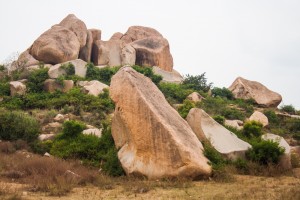 In a recent decision, the Montana Supreme Court upheld application of an Earth Movement exclusion to bar coverage for damage to a home when a single large boulder rolled down a hill and smashed into it. In doing so, the court gave the words of the exclusion their plain and ordinary meaning, refusing to give them a strained interpretation in order to find an ambiguity.
In a recent decision, the Montana Supreme Court upheld application of an Earth Movement exclusion to bar coverage for damage to a home when a single large boulder rolled down a hill and smashed into it. In doing so, the court gave the words of the exclusion their plain and ordinary meaning, refusing to give them a strained interpretation in order to find an ambiguity.
Russell Parker owned a vacation home near Sheridan, Montana. In March 2014, a large boulder fell from a hillside about 440 feet uphill from the cabin and smashed into the structure. Parker had insurance with Safeco and he submitted a claim.
Safeco hired an engineer who traced the path of the boulder back to its point of origin. The engineer observed soil remnants where the boulder originally sat in the cliff, and concluded that the freeze-thaw process of soil and water in the rock joints caused the boulder to dislodge and fall. Relying on the earth movement exclusion in the insurance policy, Safeco denied the claim.
Parker also hired an expert. He agreed with Safeco’s engineer as to the boulder’s original location and role of the freeze-thaw process. But Parker’s expert did not observe soil at the cliff, but rather saw “infilling from weathered granitic gneiss.” He concluded that no “soil” was involved because the decomposition of granitic gneiss did not create “soil” that would expand from freezing water. Believing that the policy exclusion was ambiguous, Parker sued Safeco.
The Safeco policy excluded:
9. Earth Movement, meaning:
a. the sinking, rising, shifting, expanding or contracting of earth, all whether combined with water or not. Earth movement includes but is not limited to earthquake, landslide, mudflow, mudslide, . . . .
Parker argued that “earth,” as used in the exclusion, could mean only soil, not an individual rock. According to him, a falling rock was not earth movement. The Montana trial court disagreed, pointing out that digging a shovel of earth in the Big Sky State usually yields both soil and rock. The exclusion applied.
The Montana Supreme Court agreed, in a decision issued on July 19, 2016. Parker v. Safeco Ins. Co. of America, 2016 WL 3911544 (no. DA-15-0528, 7/19/2016). The court noted that the exclusion itself did not distinguish soil from rock. According to the court, the common understanding of “landslide” includes falling or sliding of whatever is on the surface, or immediately below the surface, of the earth, whether it be soil or rock. The exclusion is not ambiguous in that regard.
The Supreme Court also rejected the all-too-frequent argument that a disagreement over the meaning of policy language establishes ambiguity and requires interpretation favorable to the insured. The court stated that merely because the trial court “had to consider and discuss the words of the policy in order to apply it does not equate with a finding that the policy language was ambiguous. Consideration and interpretation of the policy language is simply the court’s function when disputes arise.” Slip op. 5 The language at issue in this exclusion contained no words to justify restriction of the exclusion to movement involving “soil” only, and not rock. The common understanding of “earth movement” includes either or both soil and rock. Therefore, the trial court did not commit error in deciding that Safeco had correctly denied Parker’s claim on the basis of the earth movement exclusion. A falling rock was earth movement, just like a landslide or mud flow. The policy clearly did not cover resulting damage to insured property.
Earth movement can occur in many ways. It is not possible to list them all in a policy exclusion. The Parker court carefully analyzed the facts and applied common understanding to the wording of the exclusion. Importantly, the court refused to become sidetracked by arguments of ambiguity merely because the exclusion would preclude recovery for this loss or because the parties disagreed as to its interpretation.

